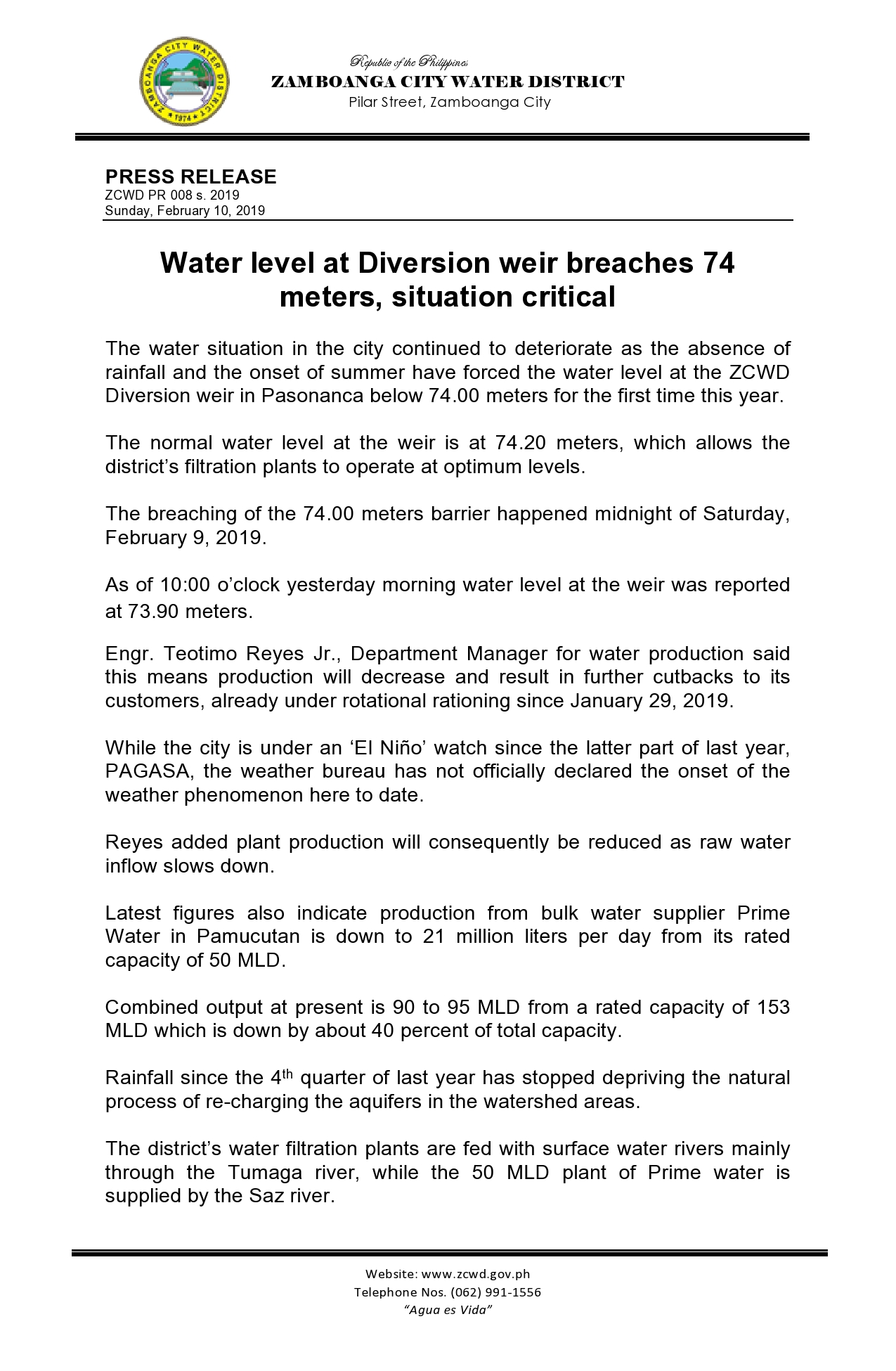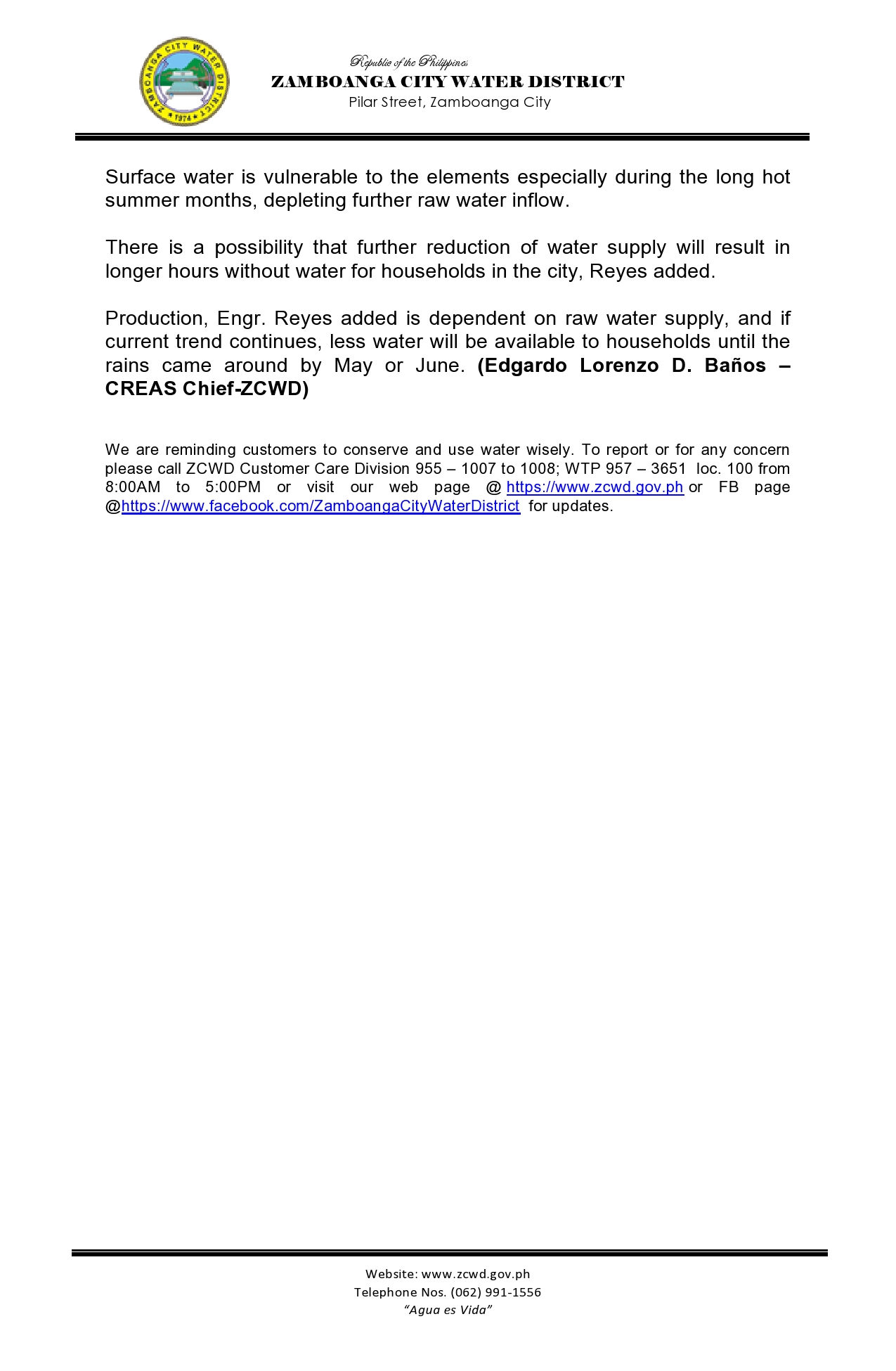Water level at Diversion weir breaches 74 meters, situation critical
The water situation in the city continued to deteriorate as the absence of rainfall and the onset of summer have forced the water level at the ZCWD Diversion weir in Pasonanca below 74.00 meters for the first time this year.
The normal water level at the weir is at 74.20 meters, which allows the district’s filtration plants to operate at optimum levels.
The breaching of the 74.00 meters barrier happened midnight of Saturday, February 9, 2019.
As of 10:00 o’clock yesterday morning water level at the weir was reported at 73.90 meters.
Engr. Teotimo Reyes Jr., Department Manager for water production said this means production will decrease and result in further cutbacks to its customers, already under rotational rationing since January 29, 2019.
While the city is under an ‘El Niño’ watch since the latter part of last year, PAGASA, the weather bureau has not officially declared the onset of the weather phenomenon here to date.
Reyes added plant production will consequently be reduced as raw water inflow slows down.
Latest figures also indicate production from bulk water supplier Prime Water in Pamucutan is down to 21 million liters per day from its rated capacity of 50 MLD.
Combined output at present is 90 to 95 MLD from a rated capacity of 153 MLD which is down by about 40 percent of total capacity.
Rainfall since the 4th quarter of last year has stopped depriving the natural process of re-charging the aquifers in the watershed areas.
The district’s water filtration plants are fed with surface water rivers mainly through the Tumaga river, while the 50 MLD plant of Prime water is supplied by the Saz river.
Surface water is vulnerable to the elements especially during the long hot summer months, depleting further raw water inflow.
There is a possibility that further reduction of water supply will result in longer hours without water for households in the city, Reyes added.
Production, Engr. Reyes added is dependent on raw water supply, and if current trend continues, less water will be available to households until the rains came around by May or June. 



